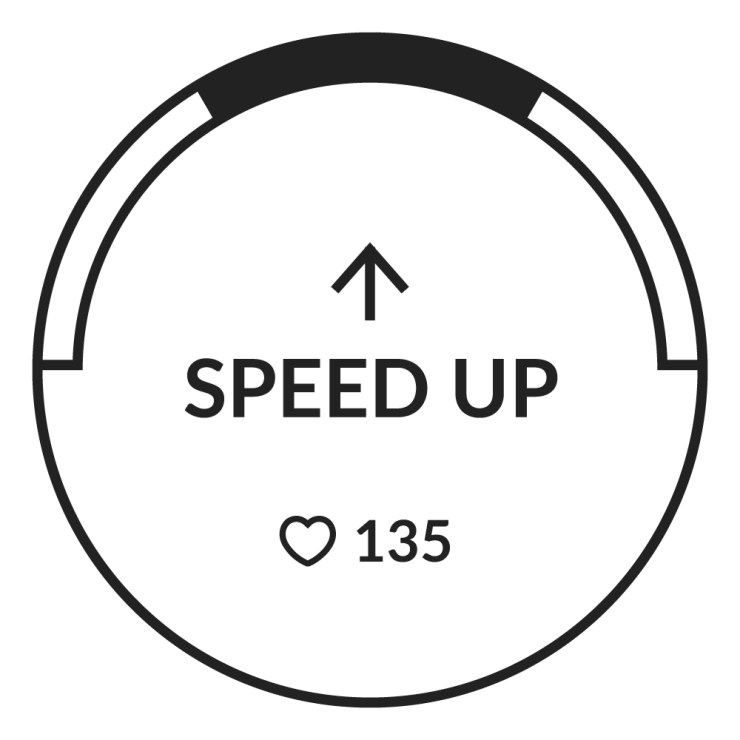Real-Time Coaching
Real-time coaching advice ensures that any type of workout is performed in a way that is effective and keeps you fit.
What Is Real-Time Coaching?
This feature relies on the Firstbeat Analytics engine to help you exercise effectively. Following real-time coaching ensures that any type of workout serves its purpose to keep you fit. This is possible due to a unique ability to measure and assess the impact of your workout on personal fitness levels.
Setting a TE-based goal for your workout enables the provision of feedback in the form of prompts such as ‘speed up,’ ‘keep this pace,’ and ‘slow down’ to ensure you reach your target effectively. When you first start to use the coaching feature, it will estimate an appropriate TE level based on your profile. As you exercise, it will analyze your training history and provide more personalized guidance. A typical workout may start at a lower intensity and sharply increase in intensity towards the end.
- Reimagine your approach to training based on desired fitness outcomes
- Receive real-time guidance to reach your targets along the way
- Take the guesswork out of what type of training is right for you today

How Does It Work?
Training Effect relies on Firstbeat Analytics’ ability to predict the physiological impact of physical activity based on heartbeat data. This impact can be quantified and measured in terms of the amount of oxygen required to complete the adaptive responses to activity and the restorative work your body performs to return to a balanced resting condition. To provide your Training Effect score, Firstbeat Analytics then takes the additional step of personalizing your feedback by interpreting it in light of your current fitness level and related variables.
The Firstbeat Analytics method for transforming heartbeat data into EPOC values relies on neural networks and machine learning techniques borrowed from the world of artificial intelligence work. These analytic tools are utilized to recognize and decode complex patterns that exist in heart rate and heart rate variability data. The result is real-time assessment of exercise that unlocks new perspectives on training.